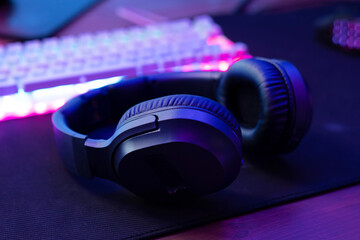Headphones are one of the most widely used audio devices, offering a personal and immersive listening experience. Whether for music, gaming, or podcasts, headphones have evolved over the years to meet the diverse needs of consumers. With advancements in technology, they have become more versatile, comfortable, and high-quality, catering to various preferences and usage scenarios. From noise-canceling features to wireless connectivity, headphones are now essential gadgets in everyday life, enhancing both entertainment and productivity and providing convenience and quality sound at your fingertips.
Types of Headphones: Wired vs. Wireless
Headphones come in two primary types: wired and wireless. Wired headphones connect directly to your device through a headphone jack or USB port, offering a reliable and consistent audio experience. However, they may limit mobility due to their cables. Wireless headphones, on the other hand, use Bluetooth technology to connect to devices without the need for cords, offering greater flexibility and convenience, especially for on-the-go use. While wireless headphones are more popular for their portability, wired options remain preferred for audiophiles seeking the best sound quality.
Noise-Canceling Technology: Immersive Listening Experience
Noise-canceling headphones are designed to block external sounds, providing an immersive audio experience. This is achieved through active noise cancellation (ANC), which uses microphones to pick up surrounding noise and then produces an opposing sound wave to cancel it out. ANC is particularly beneficial in environments with constant noise, like airplanes or busy offices. Passive noise isolation, on the other hand, relies on the physical design of the headphones to block external sound. Both types offer significant advantages for users seeking to focus or enjoy music without distractions from the outside world.
Headphone Comfort: Finding the Right Fit
Comfort is a crucial factor when choosing headphones, especially for long listening sessions. Over-ear headphones are known for their comfort as they fully cover the ears, providing good sound isolation and even sound quality. On-ear headphones rest on top of the ears and are more compact but may not be as comfortable for extended use. In-ear headphones, also called earbuds, are small and portable but may cause discomfort in the ear canal during long use. Look for features like padded headbands, adjustable ear cups, and ergonomic designs to ensure a comfortable fit.
Headphone Sound Quality: Factors to Consider
Sound quality is a critical element when selecting headphones. Several factors contribute to the audio experience, including the frequency response, driver size, and impedance. A wide frequency range helps reproduce both deep bass and high treble sounds. Larger drivers generally produce richer, fuller sound, while lower impedance is better suited for portable devices. When considering sound quality, it’s also important to think about the headphone’s sound profile, such as whether you prefer a bass-heavy, balanced, or neutral sound. Test headphones, if possible, to ensure they match your listening preferences.
Conclusion
Headphones are designed for various uses, each optimized for specific tasks. For gaming, headphones with surround sound or spatial audio enhance the immersive experience, helping players pinpoint in-game sounds. Music headphones, especially high-end models, focus on delivering rich, clear, and accurate sound to enjoy every detail of a song. For communication purposes, such as calls or virtual meetings, headphones with built-in microphones and noise cancellation are ideal. Wireless options with built-in mics are especially convenient for those who need to switch between calls, music, and meetings without the hassle of tangled cords.
